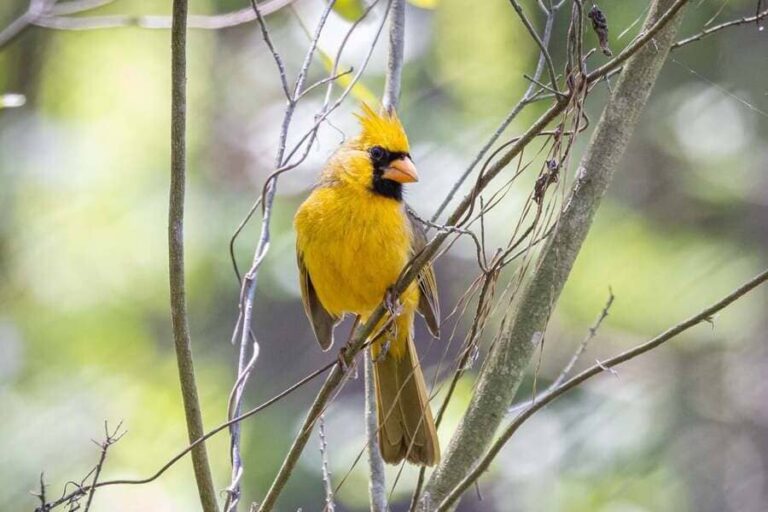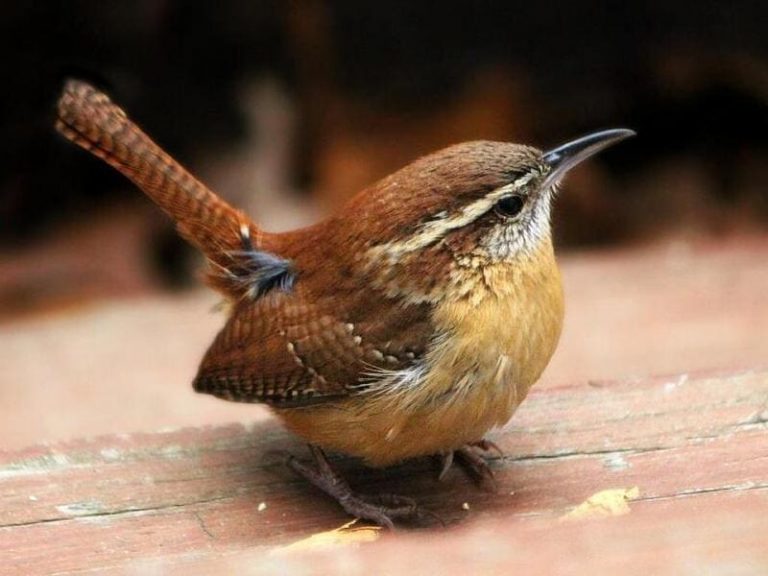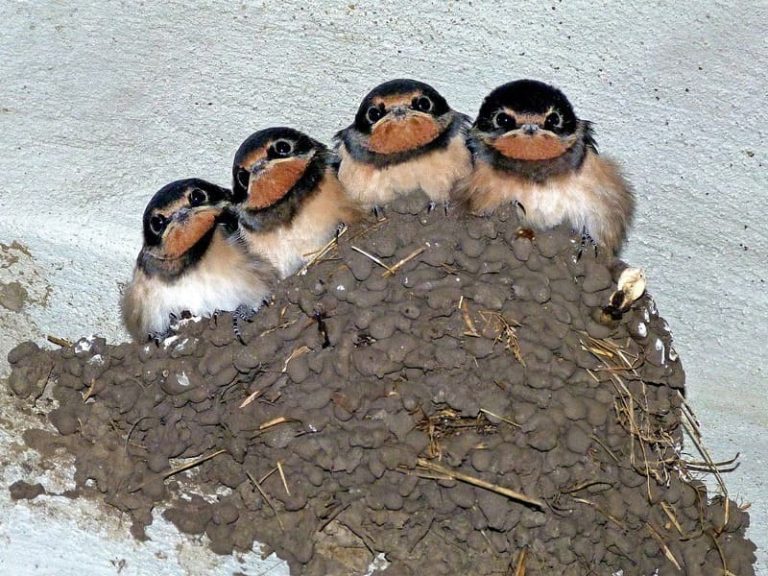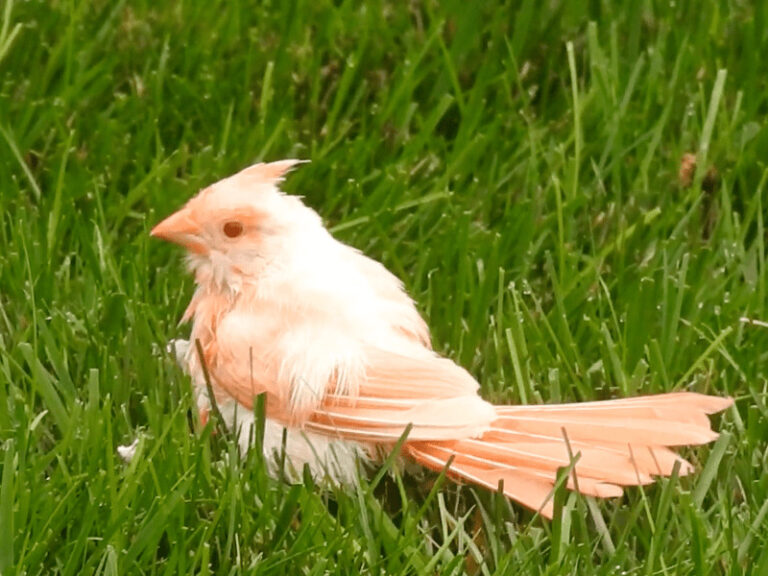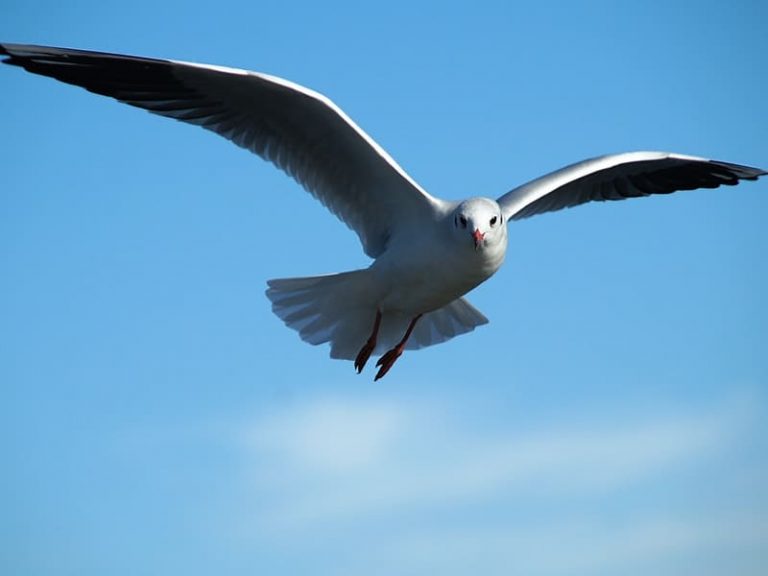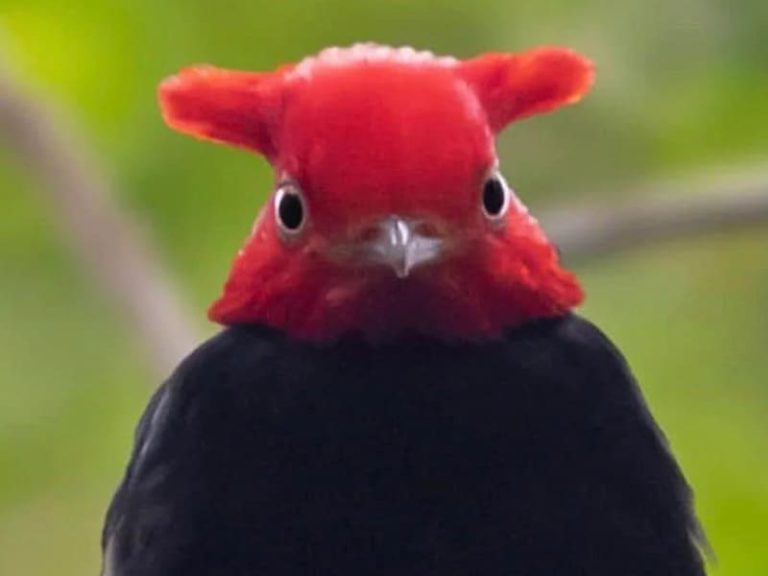15 Small Yellow Birds You Don’t Know
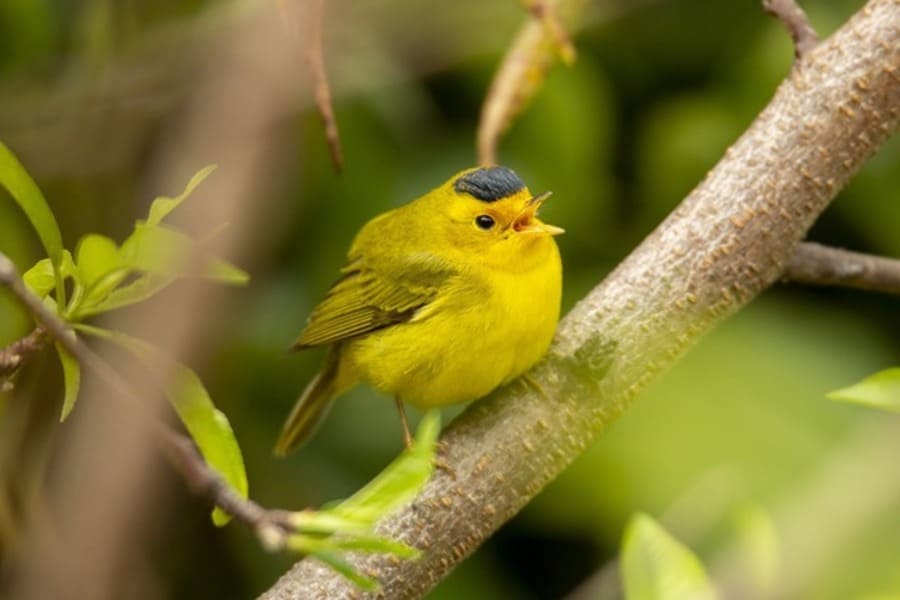
For all of us bird lovers out there, nothing can quite compare to the feeling of spotting a new feathered friend. But have you ever noticed small yellow birds flitting around and wondered just what they were?
Rarely seen or known, it’s these 15 special small yellow birds. We are giving you an introduction to how unique and inspiring each one is.
So join us as we take you on this educational journey full of photos, fun facts, and expert insight.
Small yellow birds
Small yellow birds bring a splash of sunshine to any outdoor setting with their cheery chirps and vibrant colouring.
Their delicate beauty is unique, as each species has its own pattern of feathers that makes it distinct. It can be rewarding to sit still in nature and watch these birds flutter by, as they often move quickly, making it hard to follow one for a while.
Being able to observe them is always fascinating as they travel along familiar paths and construct intricate nests.
These fascinating creatures evoke feelings of wonder and awe and remind us to slow down and appreciate the small things around us that make life more enjoyable.
These cheery birds bring a smile to many faces with their unmistakable chirp that reverberates through nature.
Despite their size, they seem to be full of courage and determination as they flit and fly from branch to branch in search of sustenance.
While the small yellow bird may not make a great impact on any one particular person, its brightness can make all the difference when combined with the companionship of others of its kind; a group of these little ones resemble a natural light show in our gardens or fields.
1. American Goldfinch
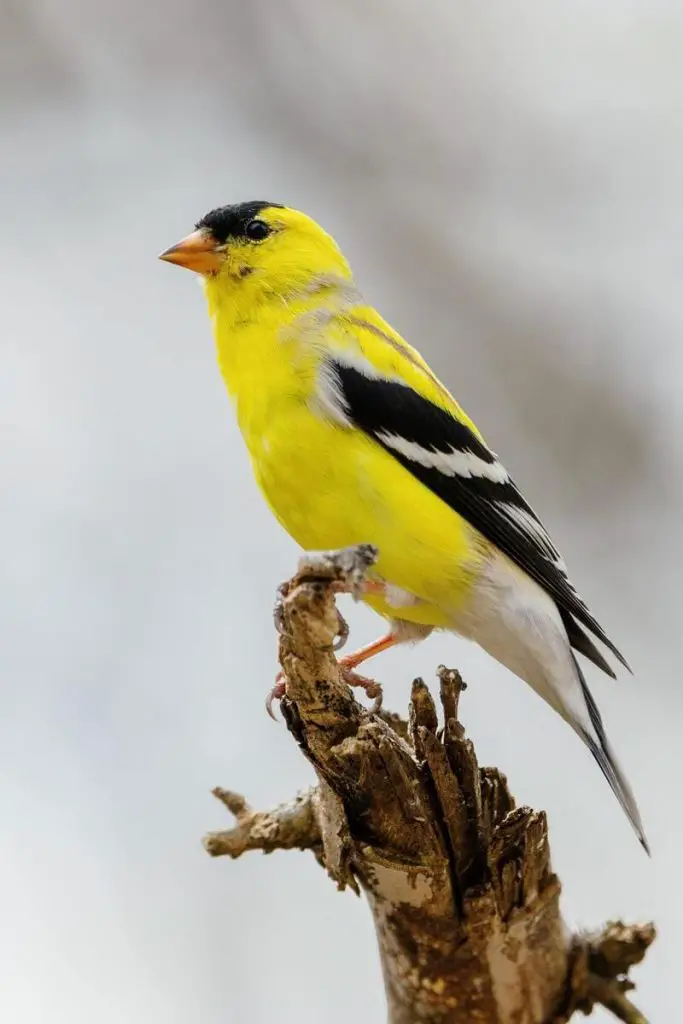
The American goldfinch is a beautiful and cheerful bird that brightens up any outdoor space. Native to North America, these small finches are relatively common sights in both rural and urban areas during the spring and summer months.
They have vivid yellow feathers with black wings, a black forehead and white patches at the shoulder side.
American goldfinches can be identified by their fast, swooping flight pattern as well as their distinctive songs, which often include long trills followed by shorter peeps or buzzes.
The birds have an impressive ability to absorb food quickly while on the fly, and they mainly eat seeds, berries and buds from plants.
During autumn, they typically form large flocks of several dozen birds, which are thought to help them survive through the harsh winter weather ahead.
2. New World warblers
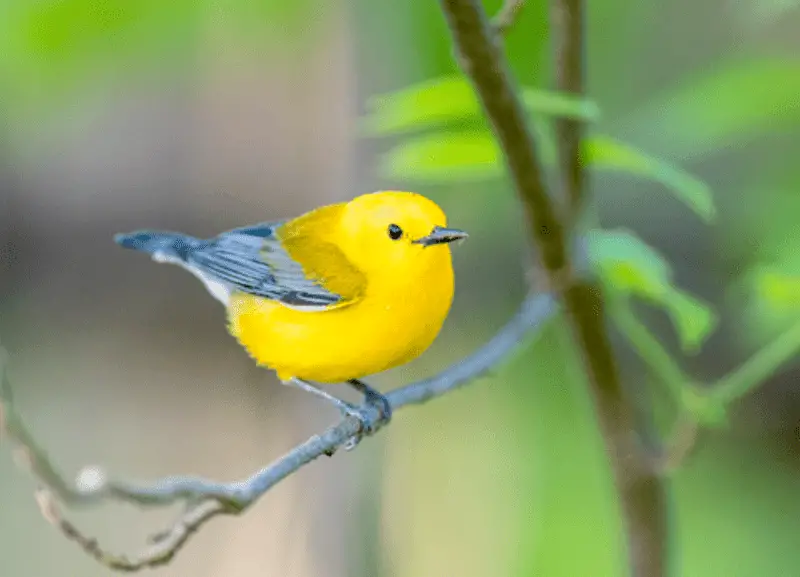
New World warblers are an amazing group of birds that inhabit much of the Americas. They often have beautiful vibrant colours, especially in the males, and many species migrate long distances to spend winter in far-off lands.
New World warblers are usually small birds with short tails, strong feet, and large eyes. They can be found in a variety of habitats, from tropical jungles to temperate forests.
However, they have a variety of dietary habits, and many feeds on insects during the breeding season, which makes them beneficial for pest control.
Quite remarkably, some species fly as far as 7,000 miles during migration! To see these wonderful birds up close is a true joy for any bird watcher and science enthusiast alike!
3. American yellow warbler
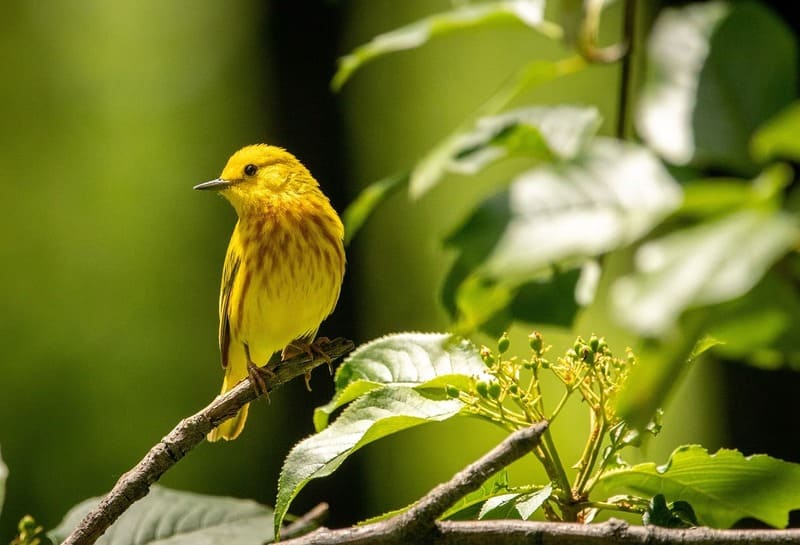
The American yellow warbler (Dendroica petechia) is a small bird that breeds throughout North America during the summer season. This species belongs to the genus Dendroica and contains several subspecies.
It is quite common to spot these birds in deciduous, coniferous and mixed woodland habitats, but they can also be found near marshes and wet meadows. These birds live on a wide variety of food, including flying insects and seeds.
Common sightings usually occur during migration periods as the American yellow warblers head south for the winter season. Thanks to their wide-range habitat, these birds are an interesting addition to North America’s dynamic ecosystem.
4. Prothonotary Warbler
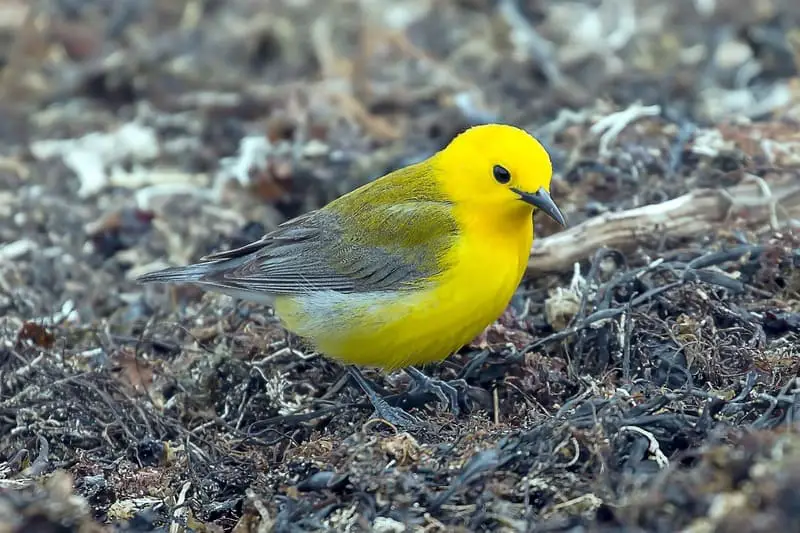
The Prothonotary Warbler is an exquisite species of bird native to the eastern United States. It can be seen flitting around wooded swamps, bottomland forests, and even freshwater marshes.
This stunning little songbird sports a striking yellow-green colour with a blue-grey back, making it easy to identify in its natural habitat.
While similar in size to a sparrow, the Prothonotary Warbler’s unique appearance sets it apart from most other birds in the U.S.
One of its more interesting traits is that this little warbler builds its nest in abandoned woodpecker cavities throughout its habitats, a strange but endearing feat of creative architectures.
With its song resembling a resounding “sweet sweet sweeter wee”, the Prothonotary Warbler is both a beautiful sight and sound to enjoy while observing nature’s elegant creatures in their native environment.
5. Female Summer Tanager
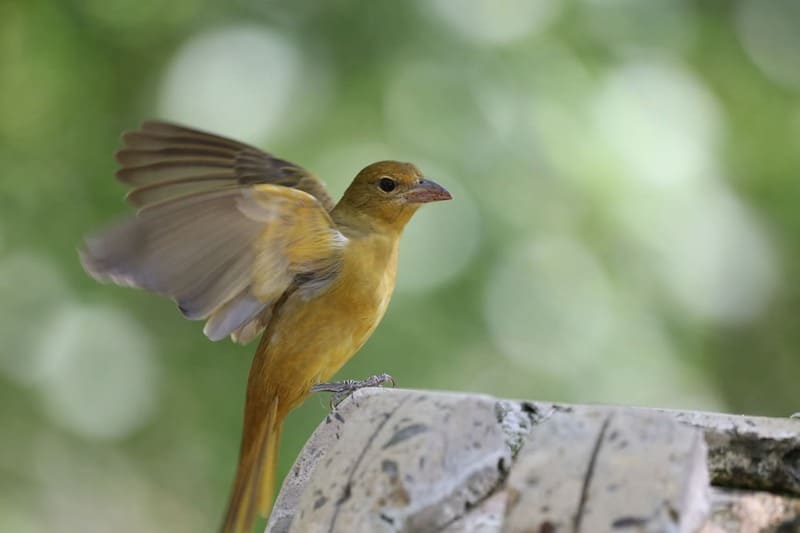
The Female Summer Tanager is a medium-sized bird with brilliant cardinal-red feathers in the male and yellow and olive green-tinged colours in the female.
These birds feed primarily on insects, including grasshoppers, crickets, caterpillars, and moths.
They breed from May to August in open woodlands along the East Coast of North America down through Central America as far as Panama, although some stray individuals reach farther north or south.
The nests are constructed from twigs and rootlets inside tree trunks or branches in dead trees at heights of 25 feet or less from the ground.
Both parents help build the nest and share parental care; however, females do most of the brooding, while males primarily supply food for both adults and chicks during the reproductive season.
6. Yellow-rumped warbler
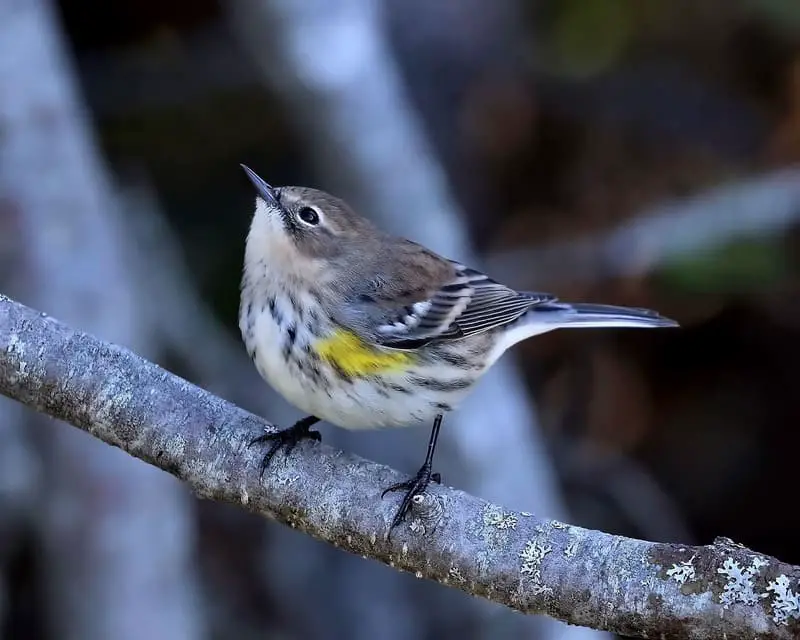
The Yellow-rumped warbler is a large songbird, reaching sizes up to five inches in length.
It has a distinctive yellow patch on the back of its neck, giving it its name. Its breeding habitat is coniferous and mixed forest throughout North America, though some separate subspecies can be found in northern Mexico as well.
The species begins its migratory journey south as early as August or later in the year, depending on geography and weather conditions.
This species is listed as the least concern by the International Union for Conservation of Nature due to its wide range and abundant population.
A unique characteristic of the Yellow-rumped warbler is that they are able to eat fruits and berries that are frozen due to cold winter temperatures.
This helps them survive during severe weather events when food sources may be limited or nonexistent.
7. Western Tanager
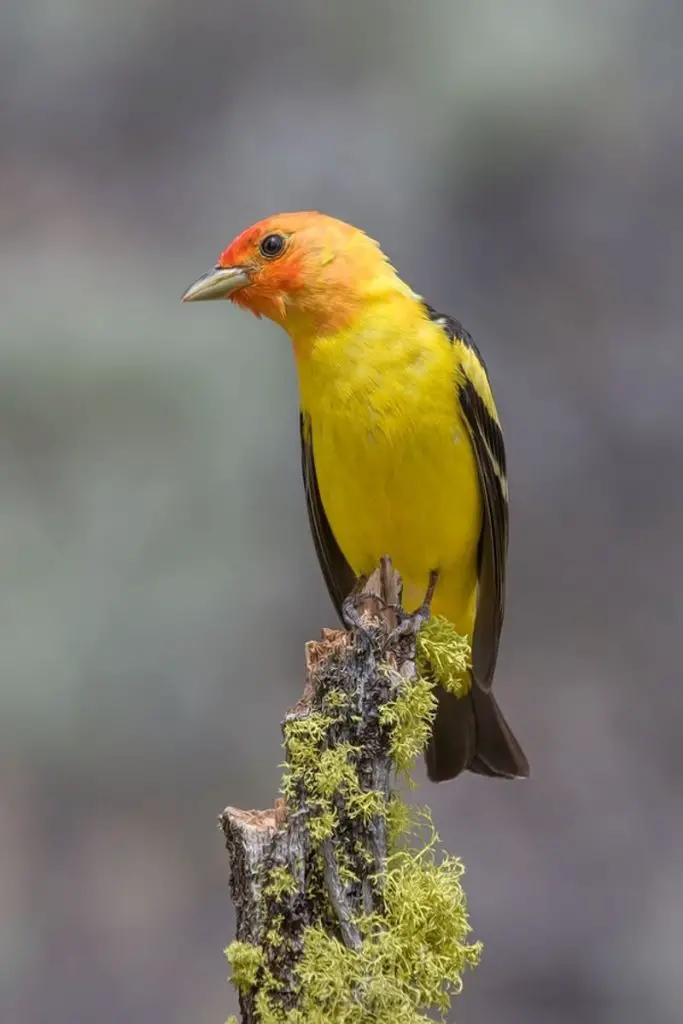
The Western Tanager is a beautiful species of songbird found throughout the western parts of North America, from southwestern Canada to northern Mexico.
This colourful creature can be identified by its bright red head and yellow body.
It typically lives in open forests near creeks, rivers, and ponds. In the summer months, it can be found foraging for insects high in tree tops or shrubs.
During the winter months, Western Tanagers migrate south to warmer climates like Mexico and California.
They often form small flocks of upwards of 20 birds while they travel to their wintering grounds. The Western Tanager is a magnificent bird that adds a festive flair to many outdoor areas during the warmer months of the year.
8. Common yellowthroat
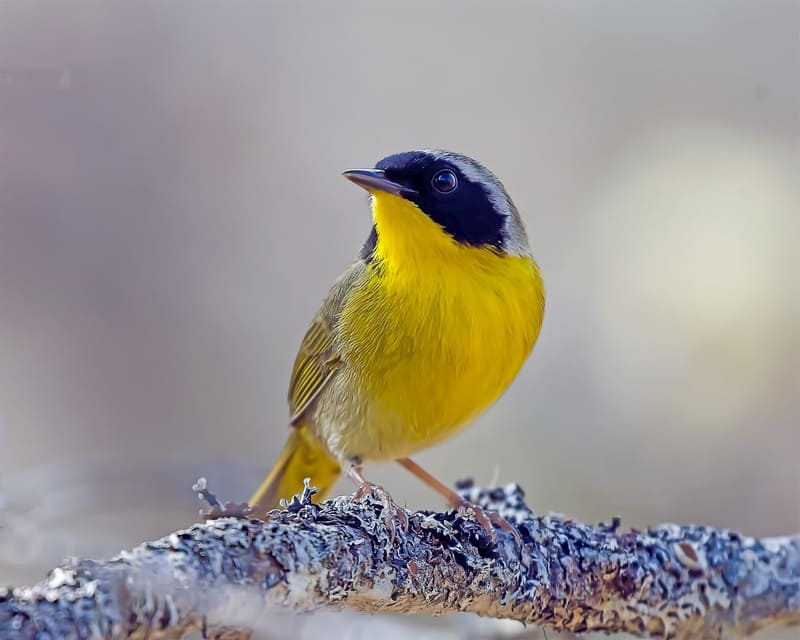
The Common yellowthroat (Geothlypis trichas) is a small, migratory bird that can be identified by its yellow throat and breast patch that stands out against its olive-drab upper parts.
This species is one of the most widespread warblers in North America, with a range stretching across Canada, the United States and into the northern half of Mexico.
The Common Yellowthroat feeds mainly on insects but will also grab spiders and other arthropods when it can.
It nests in thick undergrowth or shrubs near wetlands such as flooded meadows and marshes. The Common yellowthroat’s call has been described as a “witchity-witchity-witchity” song making it easy to identify from a distance.
9. Yellow-breasted chat
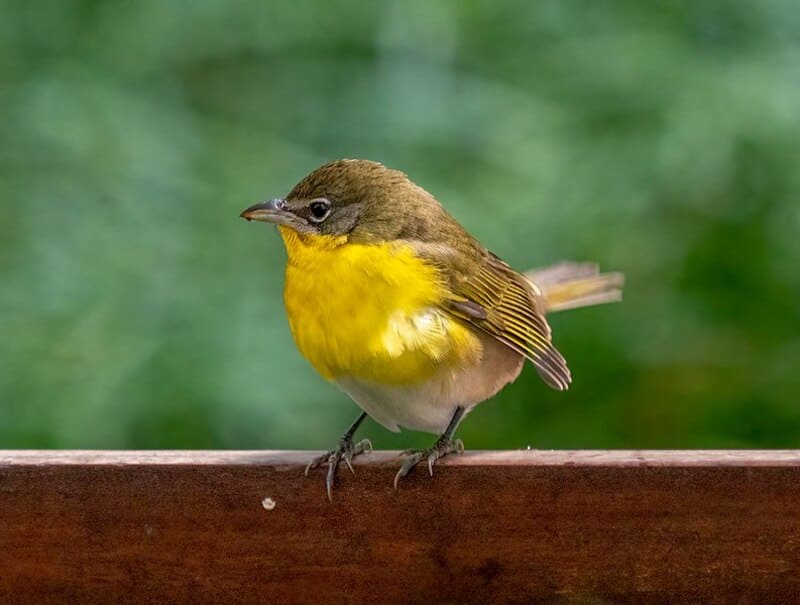
The yellow-breasted chat (Icteria virens), also known as the wild canary, is a vocal species of North American songbird. It is distinguished by its black face and breast, golden back, and strikingly white belly.
Native to open habitats such as prairies and meadows, they are found in most of the United States east of the Rocky Mountains, including parts of Mexico and Central America. They are social birds who engage in frequent bouts of singing.
Their entertaining songs typically feature a rapid series of bright notes, including trills and whistles interspersed with pauses.
While this behavior promotes their own reproductive success, it also delights people fortunate enough to have these beautiful birds in their vicinity.
10. Magnolia Warbler
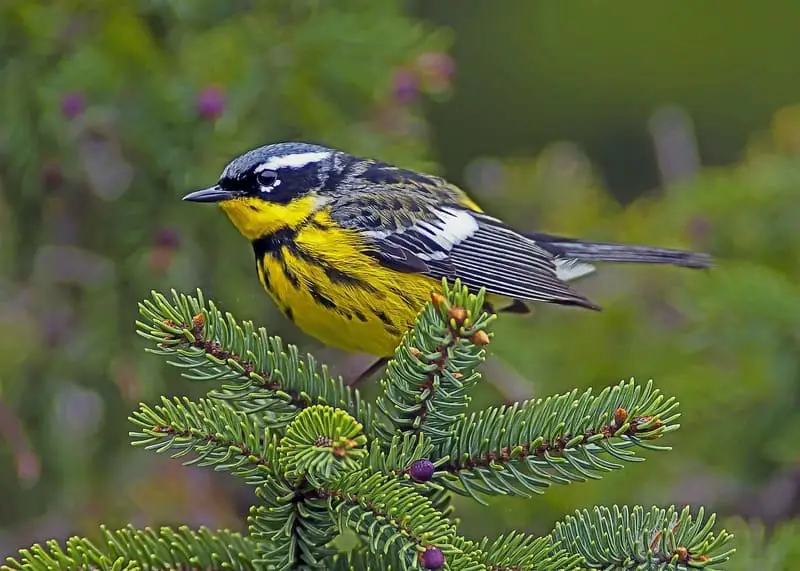
The Magnolia Warbler is a small songbird native to North America. Its adult plumage is a beautiful olive green with bright yellow underparts, and its wings are outlined with white.
During the breeding season, they can be found in coniferous and deciduous forests throughout their habitats in the US and eastern Canada, where they feed on insects and small fruits.
In fall and spring, you may spot this species migrating south along the Appalachian Mountains or around the Great Lakes.
The Magnolia Warbler has proven to be resilient to climate change for now; however, due to unsustainable forestry, destruction of insect populations, and encroachment by human development, we may not have much more time with this magnificent bird.
11. Blue-winged Warbler
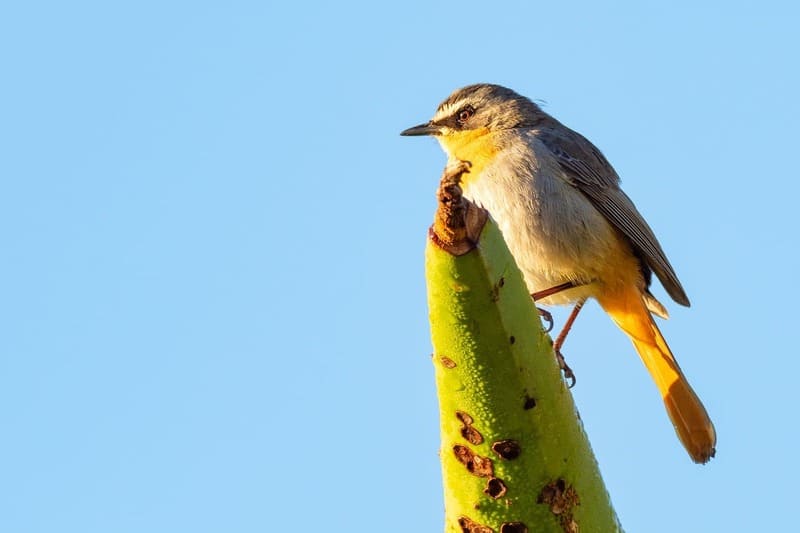
The Blue-winged Warbler is a small songbird that ranges across most of the eastern and central regions of the United States.
It has a bright yellow chest with its wings and tail being a distinctive blue colour. As an insectivore, this species relies on a healthy diet of insects such as beetles, caterpillars, and ants.
During the breeding season, they are often found in wetlands or other areas with thick vegetation, which helps them to hide from potential predators.
The male will establish his territories and loudly sing amongst the trees during this period in order to attract potential mates.
The female will then build her nest in a sheltered area, such as deep within a bush, making sure to line it with soft materials for insulation.
Thus the Blue-winged Warbler plays its own unique role within its ecosystem by providing an aesthetic representation of nature’s beauty while also helping to control insect populations.
12. Wilson’s warbler
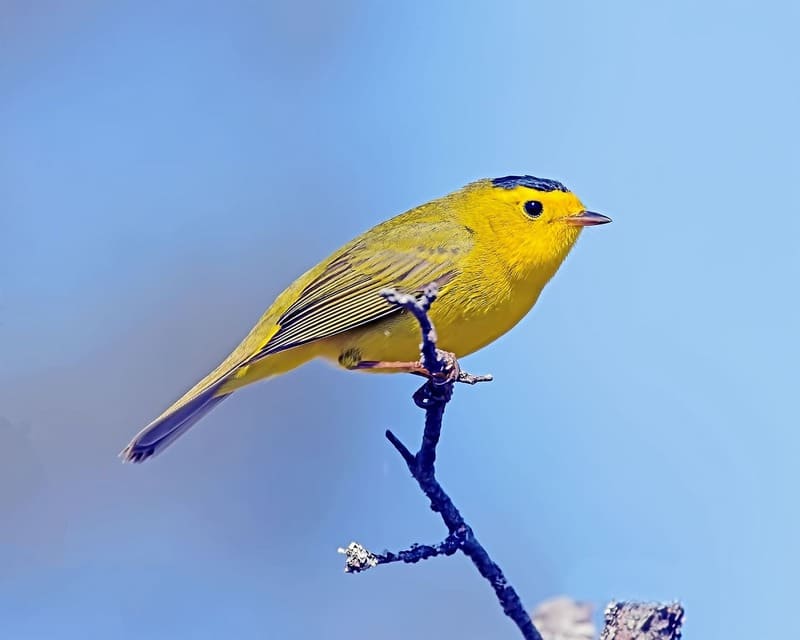
Wilson’s warbler, a small songbird found in the United States and Canada, is known for its vibrant yellow head and breast, as well as black markings on its wings and tail.
It is quite an adaptable bird, inhabiting grasslands and open woodlands alike. This species usually nests in conifer trees or shrubs.
During the winter season, Wilson’s warblers migrate to Mexico and Central America to find food more readily.
To identify these birds, you can listen for their relatively short yet rapid call or else look out for their orange-yellow crowns bobbing up and down amongst the branches!
13. Nashville warbler
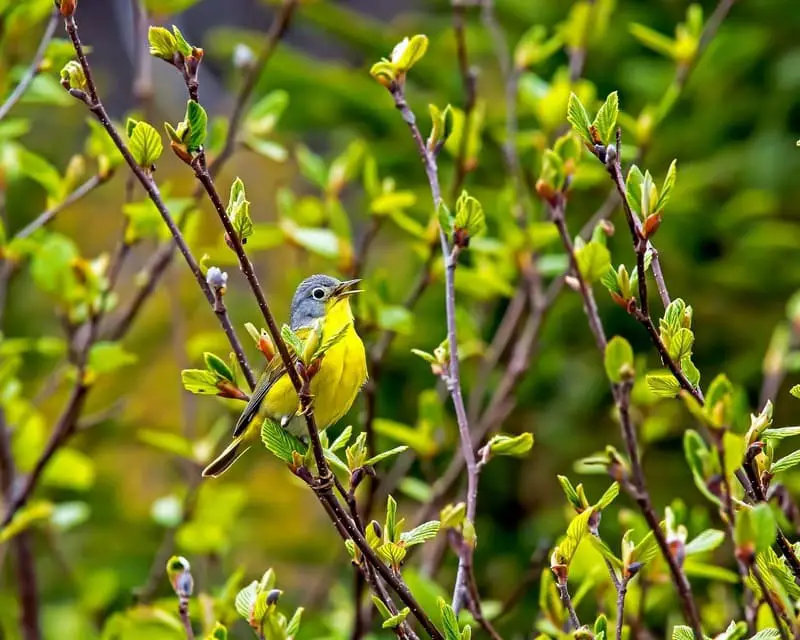
The Nashville Warbler is an inconspicuous songbird that lives in the coniferous mountains of western North America.
This small bird has plain greyish-olive plumage with yellowish underparts and black streaks on its head and wings.
It hunts for insects in deciduous trees and thickets during the summer but spends its winters in Mexico or Central America.
This species was originally found around Nashville, Tennessee, but it’s also been seen in parts of Canada, including British Columbia and Manitoba.
These birds, because they are so small, can be hard to spot. Their calls are usually more noticeable than their appearance.
They are important migratory pollinators, travelling great distances each year to reach their nesting sites. The Nashville Warbler is an impressive feat of nature that deserves to be acknowledged and celebrated!
14. Evening Grosbeak
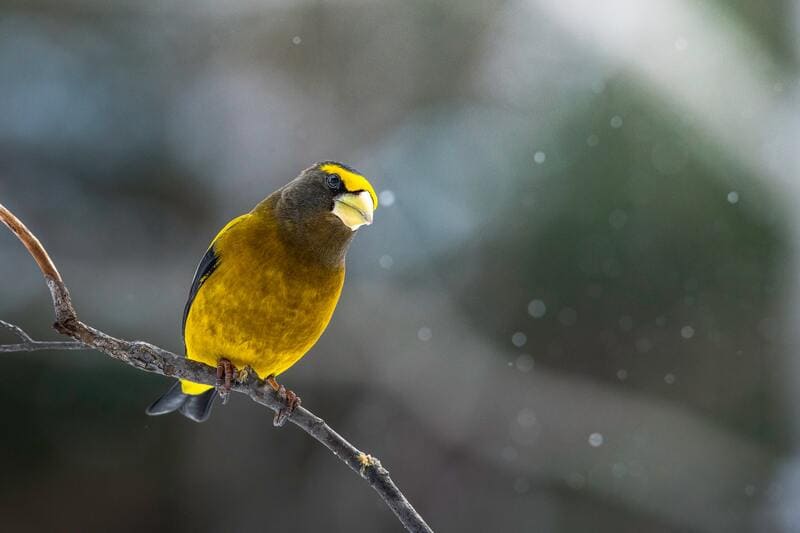
The Evening grosbeak is a large songbird relatively common to North America. It has a distinctively large bill and wingspan- up to twelve inches across, as well as unique yellow, white, black and grey plumage.
During the breeding season, they travel in flocks to search for food and during migration after the breeding season is over. Mainly granivorous (or seed-eating), they feast on sunflower seeds and millet, among other varieties.
The Evening grosbeak may be heard chirping in the early morning hours but enjoys singing late into the evening, hence its name!
They tend to congregate together while they flock together during winter, although those that stay north will rest in small family groups or individuals rather than joining with larger populations of their species.
15. Pine Warbler
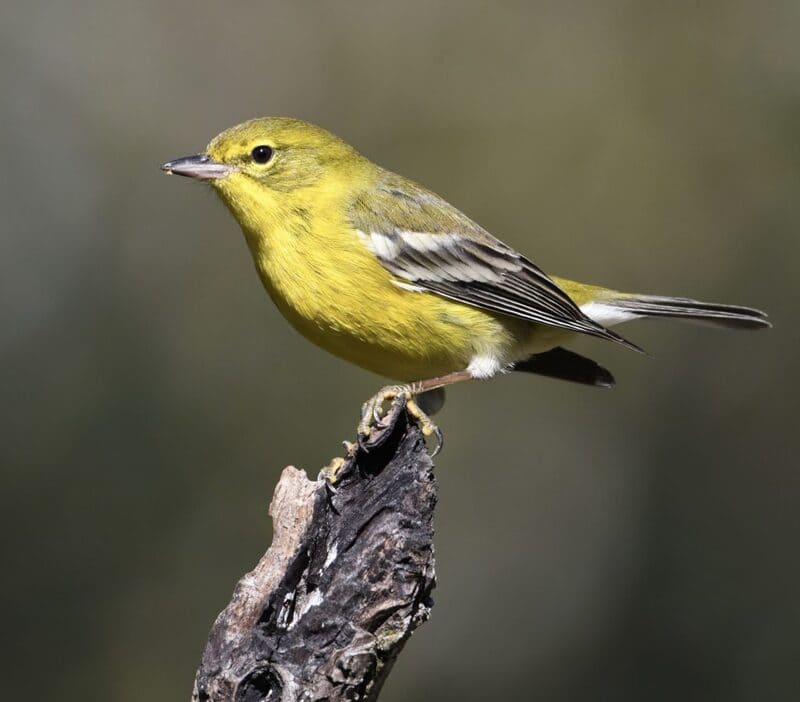
The Pine Warbler is a lively, small songbird that is native to southern Ontario and the eastern United States. It gets its name from its preference for nesting in evergreen trees.
The species typically has a yellowish or olive-green plumage covering its head, nape and breast, with much of its body showing various shades of yellow and brown.
Although it typically hangs out in pine or evergreen vegetation away from open areas, the Pine Warbler will occasionally fly into suburban neighbourhoods for food.
Its diet consists mainly of invertebrates like beetles, ants and small caterpillars, but it also enjoys munching on berries when they’re available.
In terms of its vocalizing abilities, the Pine Warbler has a variety of sweet thrills that can be enjoyed by residents throughout much of its range during the late spring and early fall months.
Final Words
All in all, the 15 small yellow birds you don’t know are interesting creatures that are definitely worth learning more about!
Whether you’re a bird lover or not, these little guys are sure to bring a smile to your face.
So next time you see one of them, take a moment to appreciate their beauty and uniqueness. They may just surprise you.
You will also enjoy reading:

